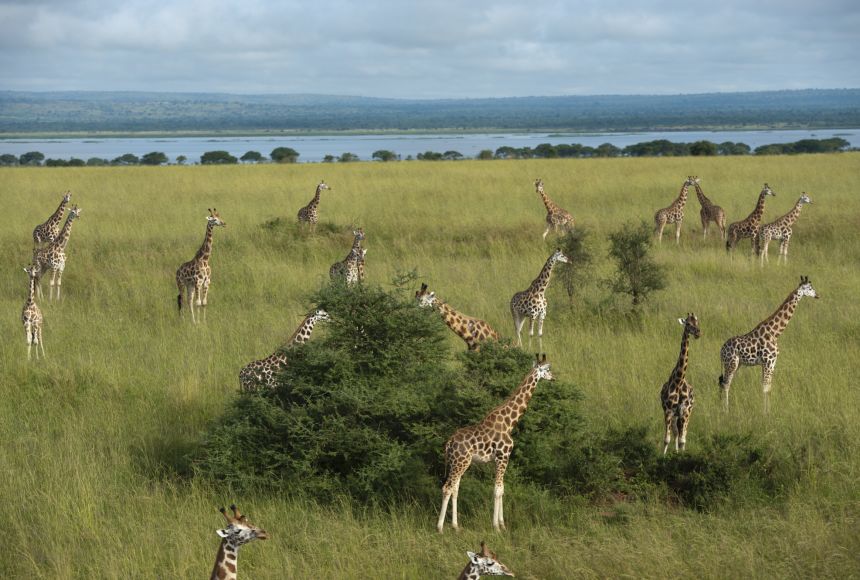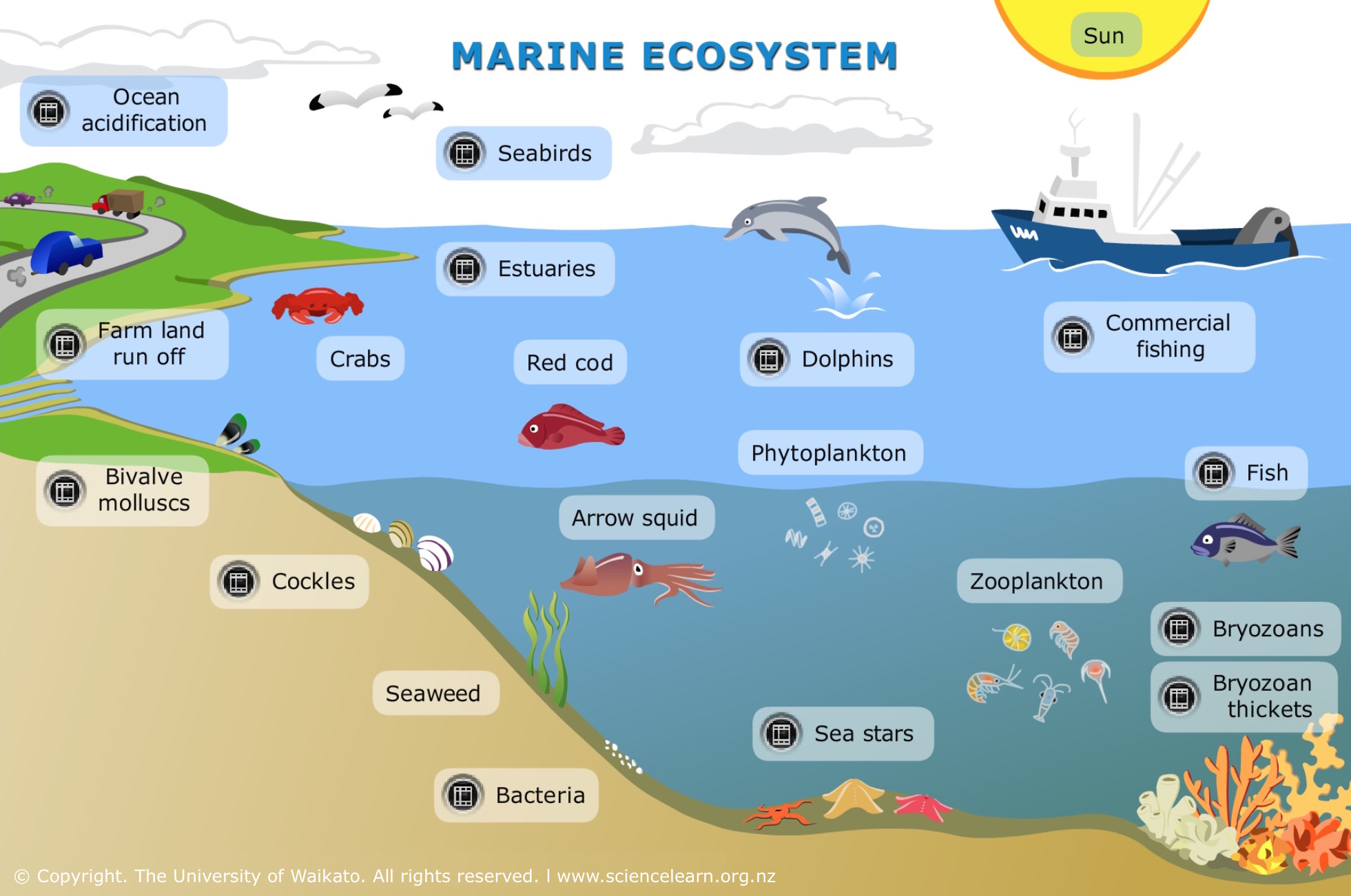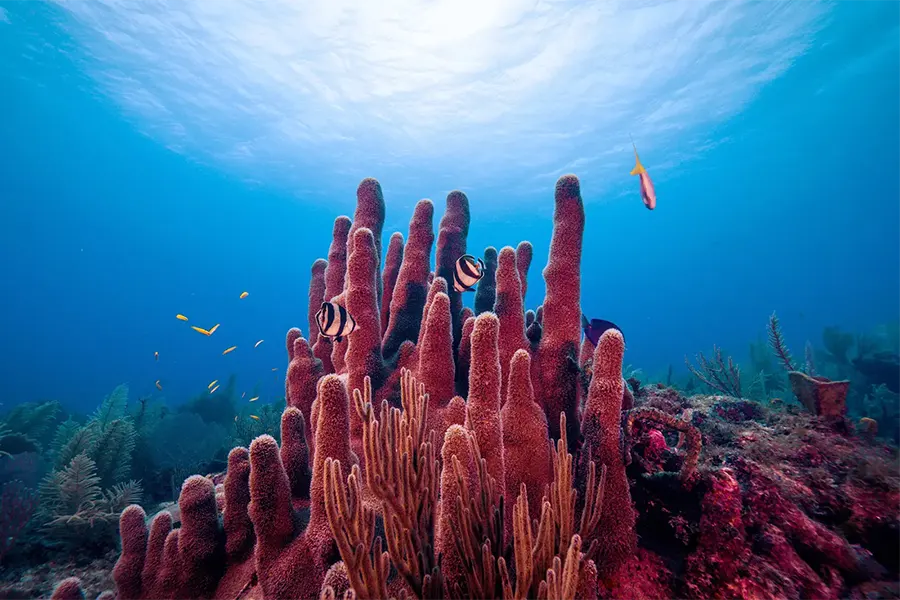Topic ecosystems in grasslands: Discover the vibrant ecosystems in grasslands, where diverse flora and fauna thrive, shaping our planet"s ecological balance and offering insights into conservation and sustainability.
Table of Content
- What are the key characteristics of ecosystems in grasslands?
- Understanding Grassland Ecosystems
- Types of Grasslands: Tropical, Temperate, and More
- Flora and Fauna: Diversity of Life in Grasslands
- Climate and Soil Conditions in Grasslands
- YOUTUBE: Ecosystems Episode 3: The Grassland Ecosystem
- Ecological Importance of Grasslands
- Human Impacts and Conservation Efforts
- Grasslands and Climate Change: Challenges and Adaptation
- Ecosystem Services Provided by Grasslands
- Threats to Grassland Ecosystems
- Case Studies: Successful Grassland Restoration Projects
What are the key characteristics of ecosystems in grasslands?
The key characteristics of ecosystems in grasslands can be summarized as follows:
- Grasses: Grasslands are dominated by various species of grasses, which form the primary vegetation in these ecosystems. These grass species are adapted to the open and dry conditions of grasslands.
- Biodiversity: Grasslands can support high levels of biodiversity, with a wide range of plant and animal species. The diversity of grasses, wildflowers, insects, birds, and mammals contribute to the richness of these ecosystems.
- Grazing animals: Grasslands often host large herbivorous animals that graze on the vegetation, such as bison, antelope, and gazelles. Grazing plays a crucial role in maintaining the grassland ecosystem by preventing the dominance of certain plant species and promoting diversity.
- Frequent fires: Grasslands are prone to frequent fires, either caused by natural occurrences like lightning strikes or by human activities. These fires play a significant role in shaping the grassland ecosystem by preventing the encroachment of woody plants and promoting the growth of grasses.
- Adaptations: Many plant and animal species in grasslands have evolved adaptations to survive in the harsh conditions. Grasses often have deep root systems to access water stored beneath the surface, while animals may have specialized behaviors or physical characteristics to cope with the temperature fluctuations and limited water availability.
- Role of insects: Insects, particularly pollinators, play a vital role in grassland ecosystems by facilitating the reproduction of flowering plants. They help in maintaining the plant diversity and productivity of grasslands.
Overall, grassland ecosystems are characterized by their open, grass-dominated landscapes, high biodiversity, grazing animals, frequent fires, and the intricate interactions between flora and fauna adapted to these unique conditions.
READ MORE:
Understanding Grassland Ecosystems
Grassland ecosystems are vast expanses dominated by grasses, which play a crucial role in the biodiversity of our planet. These ecosystems are found across the globe, from the savannas of Africa to the prairies of North America, and they support a wide range of plants and animals adapted to their specific environment.
- Definition and Distribution: Grasslands cover between 30 and 40% of the Earth"s land area, existing in regions where rainfall is too scarce to support forests but too abundant for deserts.
- Flora and Fauna: These ecosystems are home to a diverse array of species, from large mammals like bison and antelope to numerous bird, reptile, and insect species, all coexisting within complex food webs.
- Climate Influence: The climate in grassland areas can range from cold winters and hot summers in temperate grasslands, to warm and seasonal in tropical savannas.
- Human Impact: Grasslands are also crucial for human agriculture, providing fertile soils for crops and pasture for livestock, though this has also led to significant habitat degradation.
- Conservation Efforts: Recognizing their ecological importance, conservation efforts are underway to preserve these vital ecosystems from threats such as overgrazing, conversion to agriculture, and climate change.
Understanding grassland ecosystems is essential for appreciating the role they play in our global environment, supporting biodiversity, and sustaining human life through their various ecosystem services.

Types of Grasslands: Tropical, Temperate, and More
Grasslands are one of the most extensive terrestrial biomes on the planet, characterized by large open areas of grasses, herbs, and shrubs. They play a critical role in the global ecosystem, supporting a wide range of flora and fauna. There are several types of grasslands, each with unique characteristics, climates, and species.
- Tropical Grasslands (Savannas): Located near the equator, tropical grasslands are warm year-round with seasonal rainfall. These grasslands are known for their tall grasses, scattered trees, and diverse wildlife, including lions, elephants, and giraffes. Savannas are found in parts of Africa, South America, Australia, and India.
- Temperate Grasslands: Found in the interiors of continents where there"s less moisture and more extreme temperature variations between seasons. Temperate grasslands have rich soil, supporting thick grasses ideal for agriculture. Notable temperate grasslands include the North American prairies, the Eurasian steppes, and the Pampas of Argentina and Uruguay.
- Flooded Grasslands: These grasslands experience seasonal or permanent flooding, significantly influencing plant and animal life. Flooded grasslands, such as the Pantanal in South America and the Okavango Delta in Africa, are rich in biodiversity and provide critical habitats for numerous species.
- Montane Grasslands: Found in high altitude regions, these grasslands are located on or near mountains. Montane grasslands are characterized by a cooler climate, and their flora and fauna are adapted to these conditions. They are important for endemic species and are found in places like the Himalayas and the Andes.
- Desert Grasslands: These grasslands are located in arid regions and receive very little rainfall. Desert grasslands are adapted to extreme dry conditions, and the vegetation is sparse and includes drought-resistant grasses and shrubs. Examples include the grasslands of the Great Basin in the United States.
Each type of grassland plays a vital role in the earth"s ecology, offering habitat, food, and resources for a multitude of species. They also provide essential services to humans, including livestock grazing, crop cultivation, and offering rich areas for biodiversity conservation.
Flora and Fauna: Diversity of Life in Grasslands
Grasslands around the world host a remarkable diversity of life, with a wide array of plants and animals uniquely adapted to their specific environment. The flora and fauna found in these ecosystems play crucial roles in maintaining ecological balance and supporting local and global biodiversity.
Flora: Grasses and Beyond
- Grasses: The dominant vegetation in grasslands, grasses are incredibly diverse, with species like buffalo grass, bluestem, and ryegrass forming the backbone of these ecosystems. They are well adapted to conditions of drought and fire, regrowing quickly after disturbances.
- Herbs and Wildflowers: In addition to grasses, many grasslands are home to a variety of herbs and wildflowers, which bloom spectacularly during the rainy season. These include sunflowers, clovers, and wild indigos, adding bursts of color to the landscape and providing essential nectar for pollinators.
- Trees and Shrubs: While less common, some grassland areas, particularly in savannas and montane regions, support scattered trees and shrubs such as acacias, baobabs, and sagebrush, offering essential shelter and food sources for various wildlife.
Fauna: A Spectrum of Life
- Large Mammals: Grasslands are famous for their large herbivores, such as bison in North America, zebras and wildebeests in African savannas, and kangaroos in Australian grasslands. These animals play a key role in the ecosystem by grazing, which helps maintain the health of the grasslands.
- Predators: These large herbivores attract predators, forming a complex food web. Examples include lions in Africa, wolves in the North American prairies, and cheetahs in savannas, all of which are crucial for controlling herbivore populations and maintaining ecological balance.
- Birds: Grasslands are also vital habitats for birds, including ground-nesting species like the greater prairie chicken and the burrowing owl, as well as migratory birds that use these areas for breeding and feeding.
- Insects and Reptiles: A plethora of insects, including bees, butterflies, and grasshoppers, thrive in grassland environments, playing critical roles in pollination and serving as a food source for other wildlife. Reptiles, such as snakes and lizards, are also common, adapted to the grassland"s climate and terrain.
The diversity of flora and fauna in grasslands contributes to the complexity and resilience of these ecosystems. Protecting grasslands is vital for preserving biodiversity, supporting agriculture, and maintaining the ecological services they provide to the planet.

Climate and Soil Conditions in Grasslands
Grasslands are distinguished by their unique climate and soil conditions, which support vast expanses of grasses, herbs, and in some cases, scattered trees. These ecosystems are found in regions where environmental factors balance to create conditions that are too dry for forests to thrive yet too wet for deserts to form. Understanding the climate and soil of grasslands is crucial for grasping how these ecosystems function and support diverse life forms.
Climate Characteristics
- Temperature: Grasslands experience a wide range of temperatures based on their geographical location. Temperate grasslands have distinct seasons with cold winters and hot summers, while tropical grasslands maintain warm temperatures year-round.
- Precipitation: Rainfall in grasslands is moderate but less than what is required to support forests. This precipitation falls unevenly through the year, with dry seasons that can last several months. The variability in precipitation supports the growth of grasses over trees.
- Fire: Natural fires play a critical role in maintaining grassland ecosystems by preventing the encroachment of trees, recycling nutrients, and stimulating the growth of new grasses. These fires are facilitated by the dry climate and are a natural part of the grassland"s ecological cycle.
Soil Conditions
- Fertility: Grassland soils are often highly fertile, especially in temperate regions, where thick layers of organic matter from decaying grass roots enrich the soil. This fertility supports the dense growth of grasses and, where the soil is deep, supports agriculture.
- Soil Types: The predominant soil types in grasslands are mollisols in temperate regions, known for their high organic matter content, and oxisols in tropical grasslands, which are less fertile but well-drained and suitable for certain types of crops.
- Drought Resistance: Grassland soils have good water-holding capacity, enabling them to support vegetation during dry periods. The deep root systems of many grassland plants improve soil structure and help prevent erosion.
The climate and soil conditions of grasslands create environments that are uniquely suited to support a wide variety of grass species, which in turn sustain diverse animal populations. These conditions also make grasslands valuable for human use, from grazing livestock to cultivating crops. However, the sustainability of these uses depends on careful management to avoid degradation and ensure the long-term health of these vital ecosystems.
Ecosystems Episode 3: The Grassland Ecosystem
\"Discover the enchanting beauty and diversity of grasslands! Our captivating video takes you on a mesmerizing journey through these vast, golden landscapes, showcasing the remarkable wildlife and unique ecosystems that thrive in this remarkable biome.\"
The Grassland Biome - Biomes 5
\"Unlock the secrets of biomes with our fascinating video! Immerse yourself in the wonders of this incredible natural world and witness the intricate balance between plants, animals, and climate that make biomes such a captivating and essential part of our planet.\"
Ecological Importance of Grasslands
Grasslands play a crucial role in the earth"s ecological balance, providing a range of environmental benefits and supporting diverse species. Their importance extends far beyond the vast expanses of open land they cover; grasslands contribute significantly to carbon sequestration, biodiversity, water regulation, and the livelihoods of millions of people worldwide.
- Biodiversity Support: Grasslands are home to a wide variety of life, including unique plants, insects, birds, and mammals. Many species are endemic to grassland environments, relying on these habitats for survival. The preservation of grasslands is essential for maintaining biodiversity and protecting numerous endangered species.
- Carbon Sequestration: The dense root systems of grassland plants store carbon below ground, playing a significant role in carbon sequestration. This helps mitigate the effects of climate change by removing carbon dioxide from the atmosphere.
- Soil Conservation: Grasslands help prevent soil erosion through their extensive root systems, which hold the soil in place. This is crucial for maintaining soil health and preventing desertification, especially in areas prone to extreme weather events.
- Water Regulation: Grasslands play a key role in the water cycle, helping to regulate the storage and flow of water. Their soils effectively filter and store water, contributing to groundwater recharge and reducing flood risks.
- Support for Livelihoods: Grasslands provide essential resources for human livelihoods, including land for grazing livestock and growing crops. They are vital for the agricultural sector, supporting economies and communities around the world.
- Climate Regulation: By influencing the carbon cycle and water evaporation, grasslands affect local and global climates. Their preservation and restoration are important strategies in adapting to and mitigating climate change impacts.
The ecological importance of grasslands underscores the need for their conservation and sustainable management. Protecting these ecosystems ensures that they continue to provide their essential services to the planet and future generations.

Human Impacts and Conservation Efforts
Human activities have significantly impacted grassland ecosystems worldwide, leading to habitat loss, degradation, and the decline of biodiversity. However, concerted conservation efforts are underway to protect these vital ecosystems, restore their functions, and sustain their biodiversity. Understanding both the negative impacts and the efforts to mitigate them is crucial for the future of grasslands.
Human Impacts on Grasslands
- Agricultural Expansion: Conversion of grasslands to cropland and pastures for livestock has been one of the most significant drivers of habitat loss, reducing the area available for native species and altering the ecosystem"s balance.
- Urbanization: The development of urban areas encroaches on grasslands, fragmenting habitats and disrupting wildlife corridors, which is detrimental to species that require large, uninterrupted areas to thrive.
- Overgrazing: Unsustainable grazing practices can lead to soil erosion, reduction in plant diversity, and degradation of land, making it less resilient to natural disturbances.
- Climate Change: Altered weather patterns, increased frequency of extreme weather events, and shifts in temperature and precipitation regimes impact grassland ecosystems, affecting their ability to support wildlife and provide ecosystem services.
- Pollution: Use of pesticides and fertilizers in agriculture, along with air and water pollution, can harm grassland species and disrupt ecological processes.
Conservation Efforts
- Protected Areas: Establishing national parks, reserves, and wildlife sanctuaries to protect significant grassland habitats and their native species from further degradation.
- Sustainable Management Practices: Promoting sustainable agriculture and grazing practices to reduce impact on grasslands, including rotational grazing, organic farming, and the restoration of native grass species.
- Restoration Projects: Undertaking efforts to restore degraded grasslands through reseeding native plants, controlling invasive species, and rehabilitating soil health to revive ecosystem functions.
- Climate Change Mitigation: Implementing strategies to reduce greenhouse gas emissions and enhance carbon sequestration in grasslands, such as improved land management and conservation tillage practices.
- Community Engagement and Education: Involving local communities in conservation efforts and raising awareness about the importance of grasslands for biodiversity, climate regulation, and human well-being.
The challenges facing grasslands are significant, but with targeted conservation efforts and sustainable management practices, it is possible to mitigate human impacts and preserve these ecosystems for future generations. The success of these efforts requires collaboration among governments, NGOs, scientists, local communities, and the private sector.
Grasslands and Climate Change: Challenges and Adaptation
Grasslands are critically affected by climate change, facing challenges that threaten their ecosystems, biodiversity, and the services they provide. These changes necessitate adaptation strategies to safeguard grassland health and functionality. Understanding the specific challenges and potential adaptations is essential for the resilience of these ecosystems in the face of changing climate conditions.
Challenges Posed by Climate Change
- Altered Precipitation Patterns: Changes in rainfall timing and quantity can lead to droughts or flooding, affecting grassland productivity and species composition.
- Increased Temperatures: Rising temperatures can stress plants and animals, potentially leading to shifts in species distributions and reduced biodiversity.
- Increased CO2 Levels: While higher CO2 levels can stimulate plant growth, they also can alter plant nutrient content, impacting herbivores and the entire food web.
- More Frequent and Intense Wildfires: Climate change contributes to more extreme weather conditions, increasing the frequency and intensity of wildfires, which can alter grassland structure and function.
- Invasive Species: Altered climate conditions can favor invasive species over native ones, leading to biodiversity loss and ecosystem disruption.
Adaptation Strategies
- Enhanced Monitoring and Research: Implementing comprehensive monitoring programs to track changes and research initiatives to understand climate impacts on grassland ecosystems.
- Sustainable Land Management: Adopting land management practices that enhance ecosystem resilience, such as rotational grazing, fire management, and the restoration of degraded areas.
- Conservation and Restoration: Protecting existing grasslands and restoring degraded areas to increase biodiversity and resilience against climate impacts.
- Species Adaptation and Relocation: Facilitating the adaptation of species to changing conditions or relocating species to areas where they are more likely to thrive.
- Policy and Planning: Developing and implementing policies that support sustainable grassland management and conservation, integrating climate change adaptation into environmental planning.
- Community Engagement: Involving local communities in adaptation efforts, leveraging traditional knowledge and practices to enhance resilience and sustainability.
Addressing the challenges of climate change in grasslands requires a multifaceted approach that combines scientific research, sustainable management, conservation efforts, and policy interventions. By adopting proactive and adaptive strategies, it is possible to mitigate the impacts of climate change on these vital ecosystems and ensure their continued contribution to global biodiversity, carbon sequestration, and human livelihoods.

Ecosystem Services Provided by Grasslands
Grasslands, covering vast areas of the Earth"s surface, offer a multitude of ecosystem services that are crucial for the environment, as well as for human well-being and economic development. These services range from supporting biodiversity and contributing to climate regulation to providing resources for agriculture and cultural values. Recognizing and valuing these services is essential for sustainable management and conservation of grassland ecosystems.
- Biodiversity Support: Grasslands serve as a habitat for a wide range of species, from grasses and wildflowers to insects, birds, and mammals. This biodiversity is not only valuable in its own right but also supports ecosystem functions and resilience.
- Carbon Sequestration: The soil in grasslands is a significant carbon sink, storing carbon that plants absorb from the atmosphere. This sequestration plays a crucial role in mitigating climate change by reducing greenhouse gas concentrations.
- Water Regulation: Grasslands contribute to water purification and flood regulation. Their soils filter pollutants and sediments from water, improving its quality, while their structure helps absorb rainfall, reducing flood risks.
- Soil Erosion Control: The root systems of grassland plants hold soil in place, reducing erosion caused by wind and water. This is vital for maintaining soil health and preventing desertification in vulnerable regions.
- Agricultural Productivity: Grasslands provide fertile soils for crop production and grazing lands for livestock, which are foundational for food security and agricultural economies around the world.
- Cultural and Recreational Values: Many societies value grasslands for their aesthetic beauty, cultural significance, and recreational opportunities. These areas offer spaces for activities like hiking, bird watching, and other forms of ecotourism.
- Climate Regulation: Beyond carbon sequestration, grasslands influence local and global climate patterns through their effects on surface albedo, evapotranspiration, and cloud formation, contributing to climate regulation.
The ecosystem services provided by grasslands underscore their importance to the planet"s ecological balance, economic sustainability, and our quality of life. Effective management and conservation strategies are crucial to protect these services in the face of ongoing environmental challenges and climate change.
Threats to Grassland Ecosystems
Grassland ecosystems, despite their resilience and ecological significance, are facing multiple threats that jeopardize their biodiversity, functionality, and the services they provide. These threats stem from various human activities and environmental changes, leading to the degradation and loss of grassland areas worldwide. Identifying and addressing these threats is crucial for the conservation and sustainable management of grasslands.
- Land Conversion: The transformation of grasslands into agricultural lands, urban areas, and infrastructure developments is one of the most significant threats. This conversion not only reduces the area of grasslands but also fragments habitats and disrupts ecological processes.
- Unsustainable Agricultural Practices: Intensive farming and overgrazing can lead to soil degradation, loss of native vegetation, and reduced biodiversity. The excessive use of fertilizers and pesticides further contaminates soil and water resources.
- Invasive Species: The introduction of non-native plant and animal species can outcompete indigenous species, alter fire regimes, and disrupt the balance of grassland ecosystems, leading to biodiversity loss.
- Climate Change: Altered precipitation patterns, increased temperatures, and more frequent extreme weather events can stress grassland ecosystems, affecting species distribution, plant growth, and the occurrence of wildfires.
- Pollution: Air and water pollution from industrial and agricultural sources can harm grassland species and degrade the quality of the environment they depend on.
- Fire Suppression: In ecosystems where natural fires play a critical role in maintaining the grassland landscape, suppression of these fires can lead to the encroachment of woody plants, altering the habitat and reducing biodiversity.
- Overexploitation: The excessive harvesting of grassland resources, whether for timber, fuel, or forage, can deplete natural assets and impair the ecosystem"s ability to regenerate and sustain its functions.
Addressing these threats requires integrated conservation strategies, sustainable management practices, and global cooperation to ensure that grasslands continue to thrive and support diverse forms of life on Earth.

READ MORE:
Case Studies: Successful Grassland Restoration Projects
Grassland restoration projects around the world demonstrate the potential for recovering these vital ecosystems, enhancing biodiversity, and restoring ecological functions. These case studies highlight successful strategies and practices that have been implemented to rehabilitate degraded grasslands, offering valuable lessons for future conservation efforts.
- The American Prairie Reserve, USA: Aiming to create the largest nature reserve in the continental United States, this project works to connect and restore over three million acres of native prairie in Montana. Through strategic land acquisition and partnerships, the reserve is restoring grassland habitats for native flora and fauna, including bison, and implementing sustainable land management practices.
- The Grasslands Restoration Project, South Africa: Focused on the critically endangered grassland ecosystems in the Eastern Cape, this project employs a combination of scientific research, community engagement, and sustainable management practices to restore native vegetation, combat invasive species, and improve water quality and soil health.
- The Loess Plateau Watershed Rehabilitation Project, China: This project has transformed one of the world"s poorest regions by rehabilitating approximately 35,000 square kilometers of degraded land, including grasslands, through terracing, planting native vegetation, and implementing sustainable agricultural practices. The project has significantly improved local livelihoods, biodiversity, and ecosystem services.
- The Pampas Restoration Initiative, Argentina: Addressing the loss of native grasslands in Argentina"s Pampas, this initiative focuses on restoring ecosystem functions through reseeding native grass species, sustainable grazing management, and the creation of protected areas to conserve the region"s biodiversity.
These case studies illustrate the effectiveness of diverse restoration strategies, including land protection, community involvement, sustainable management, and ecological restoration techniques. The success of these projects provides hope and guidance for future grassland restoration efforts globally, underscoring the importance of commitment, collaboration, and innovative approaches to conservation.
Exploring the vast and vibrant ecosystems of grasslands reveals their crucial role in our planet"s biodiversity, climate regulation, and human livelihoods. Join us in uncovering the beauty, challenges, and successful conservation efforts that highlight the importance of protecting these precious ecosystems for future generations.














